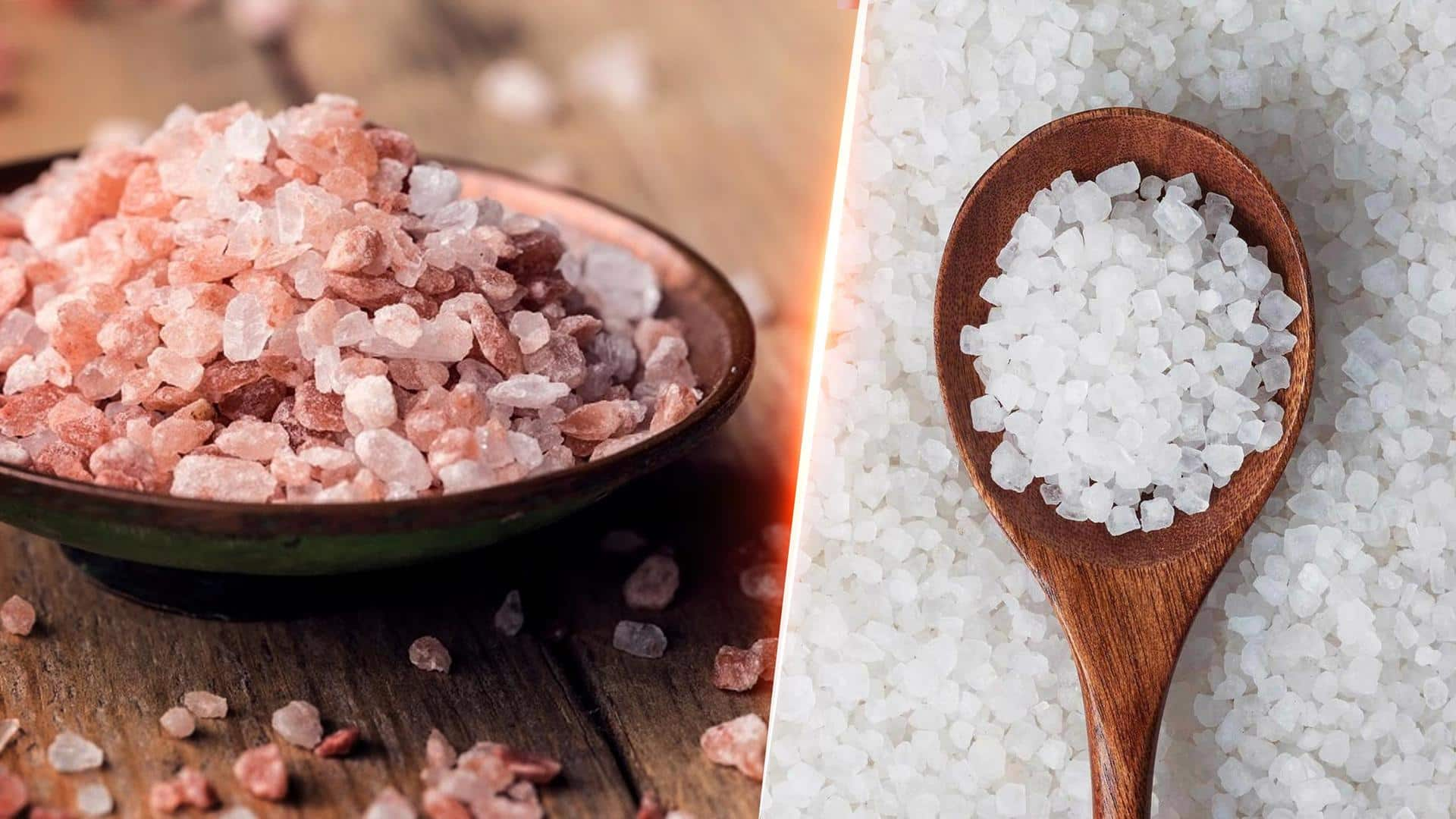
Sendha namak vs regular salt: A comparison
What's the story
The question of which salt is better, sendha namak or regular table salt, is not a straightforward one as both have their own unique characteristics and potential benefits. However, sendha namak, also known as Himalayan pink salt, is often considered a healthier alternative to regular table salt because of its mineral content and lower sodium content. Let's know why is that so.
Origin
Source
Sendha namak is directly sourced from the salt mines located in the foothills of the Himalayas. The salt is mined by hand and is naturally pink in color due to the presence of minerals like iron oxide. Regular salt, on the other hand, is sourced from various places such as underground salt mines, seawater, or other sources.
Sodium
Sodium content
Reducing overall sodium intake is often recommended for better health, regardless of the type of salt consumed. Sendha namak contains slightly less sodium than regular table salt. Excess sodium intake can contribute to health problems, including high blood pressure, heart disease, and stroke. You can go through this piece to know five reasons why a low-salt diet is good for health.
Process
Processing
Sendha namak is an unrefined salt that undergoes minimal processing. It is typically hand-mined and sun-dried, which means it retains its natural mineral content. In contrast, regular table salt is highly refined and processed to remove impurities and minerals, resulting in a more uniform product. During the refining process, regular table salt is often treated with chemicals and anti-caking agents to prevent clumping.
Flavor
Taste
The flavor of sendha namak and regular salt is also a major differentiating factor. The former has a slightly different taste compared to regular table salt. Some people describe it as having a more complex, nuanced flavor, while others may find it less salty. In contrast, regular table salt is known for its sharp taste and is more predictable.
Uses
Culinary uses
Both salts are used in making dishes to enhance the flavor of food. However, they are often used in different ways due to their distinct flavor profiles. Sendha namak is often used to season salads and chaats. Regular salt, on the other hand, is used to season a wide variety of dishes, from meat and poultry to vegetables and soups.